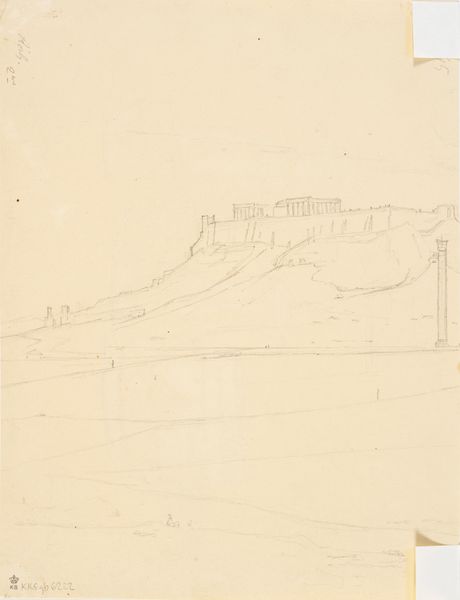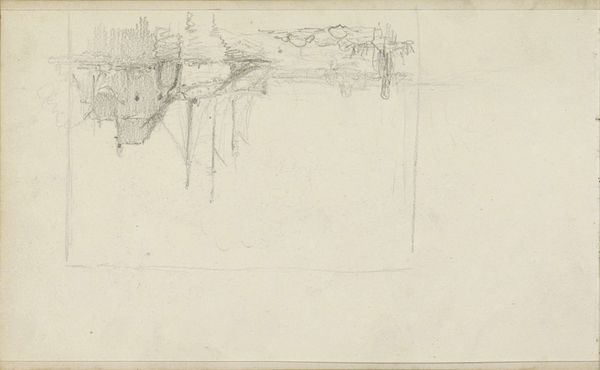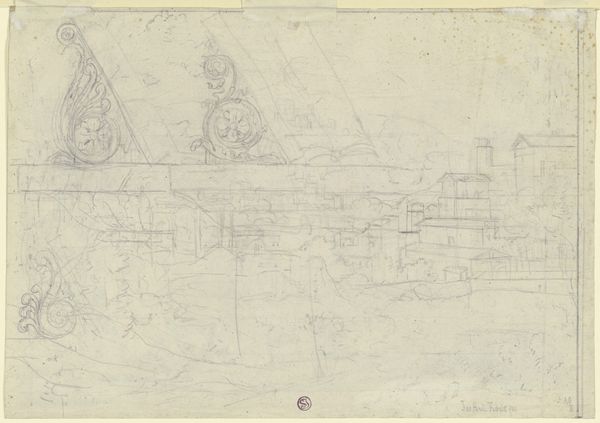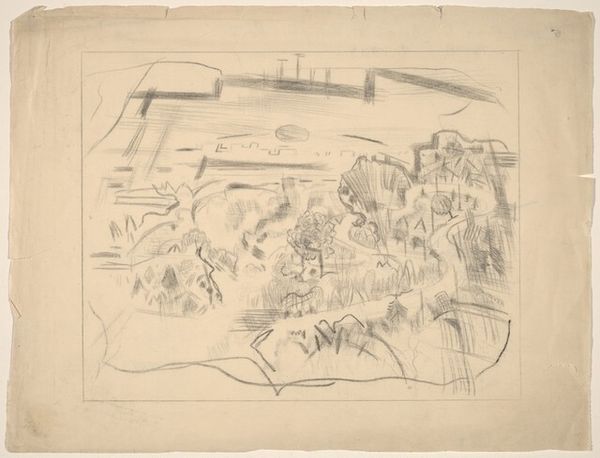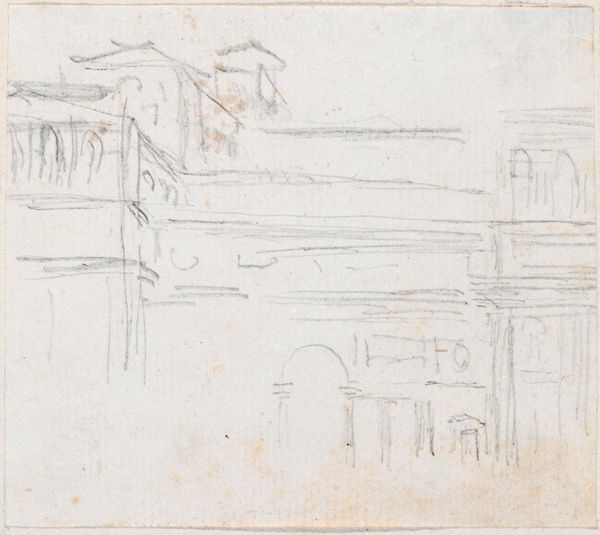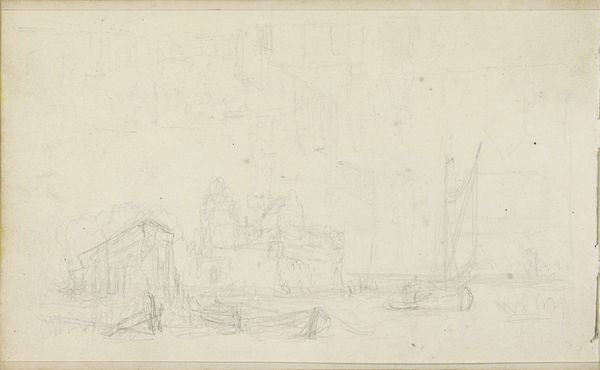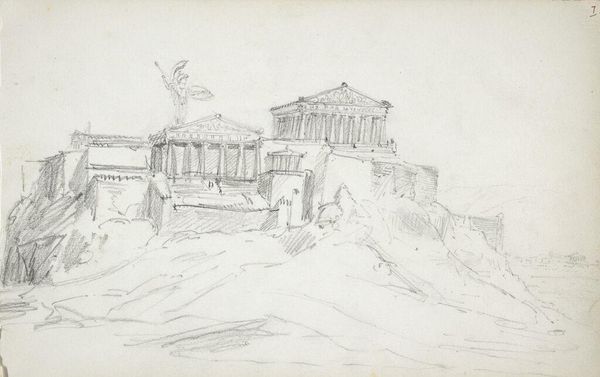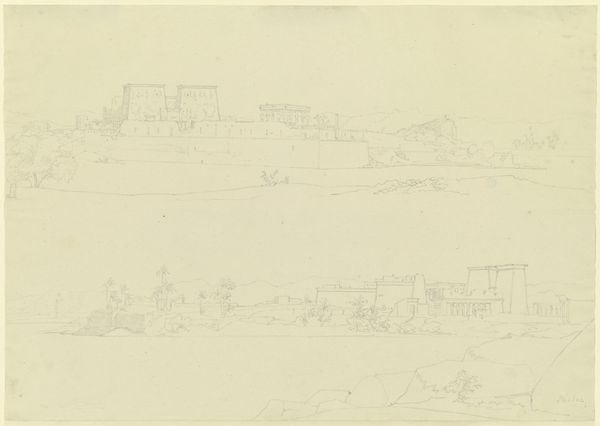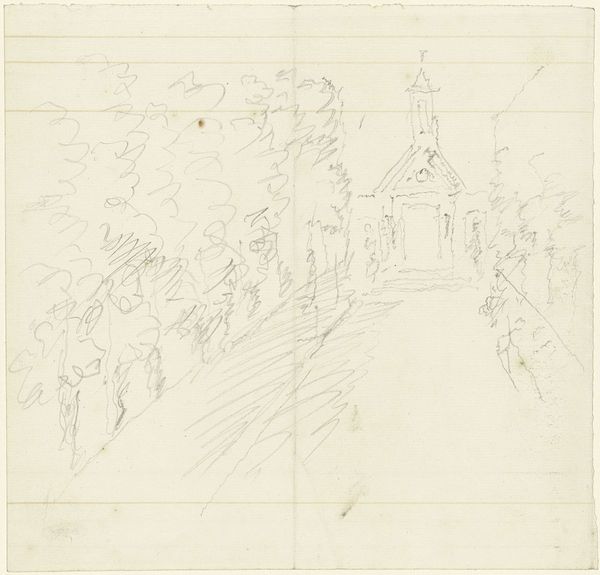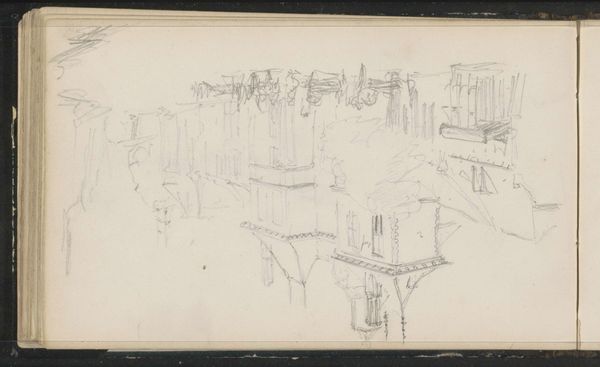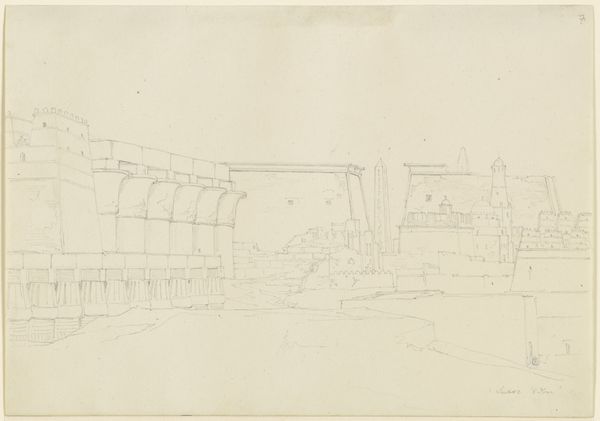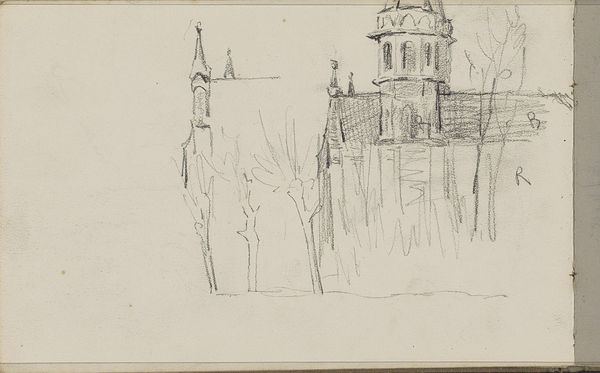
Dimensions: image: 150 x 302 mm
Copyright: CC-BY-NC-ND 4.0 DEED, Photo: Tate
Editor: This is John Martin’s ‘Study for The Last Judgement’ from the Tate Collections. It's a pencil drawing, and evokes such a sense of vastness and impending doom. What do you see in it? Curator: The symbols here are potent. Martin often used architectural forms to represent the divine and the temporal. Notice how the grand structures loom, almost judging the tiny figures below. What emotions do those contrasting scales evoke for you? Editor: A sense of helplessness, definitely. Like humanity is insignificant in the face of something much larger. Curator: Precisely. The visual language speaks of cultural anxieties around industrialization and religious doubt. The "Last Judgement" isn't just a biblical event, it's a metaphor for societal upheaval. Editor: I never thought about it that way, seeing it as a reflection of broader anxieties is fascinating. Curator: Indeed, visual symbols often echo deeper cultural memories and fears. Editor: Thanks, I will definitely look at it differently now.
Comments
tate 8 months ago
⋮
http://www.tate.org.uk/art/artworks/martin-study-for-the-last-judgement-t07271
Join the conversation
Join millions of artists and users on Artera today and experience the ultimate creative platform.
tate 8 months ago
⋮
This small study is related to the lower half of John Martin's large oil in the Tate, The Last Judgement (Tate Gallery T01927), which illustrates the central event of the Book of Revelation. The study incorporates the most eye-catching detail in the picture, and for nineteenth century viewers the most chilling one, in which a railway train is shown plunging into the bottomless pit. A small flap of paper pasted along the bottom right edge onto the main sheet can be lifted to reveal an alternative grouping of figures for the bottom right hand corner of the oil. A small oil sketch relating to The Last Judgement is in the Yale Center for British Art, New Haven, Connecticut. The main paper support of the sketch was recycled by Martin from one of his many unrealised engineering schemes for improved water and sewage plants for London. The verso shows part of a plan and specifications for a 300 x 150 foot receptacle or pit, lined with glazed bricks, for dealing with sewage overflow.Further reading:William Feaver, The Art of John Martin, Oxford 1975, pp.188-204Terry Riggs November 1997
